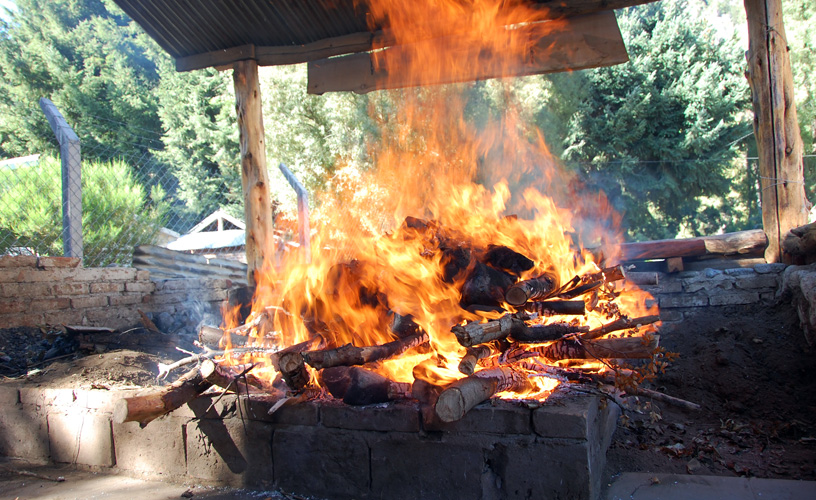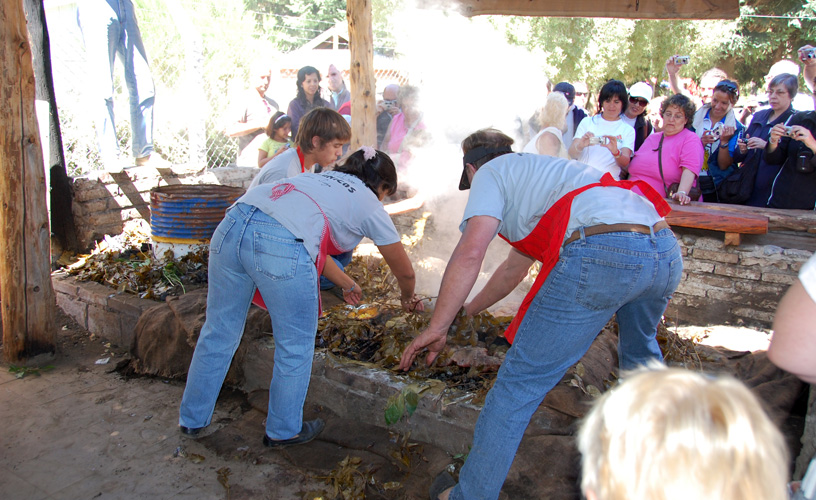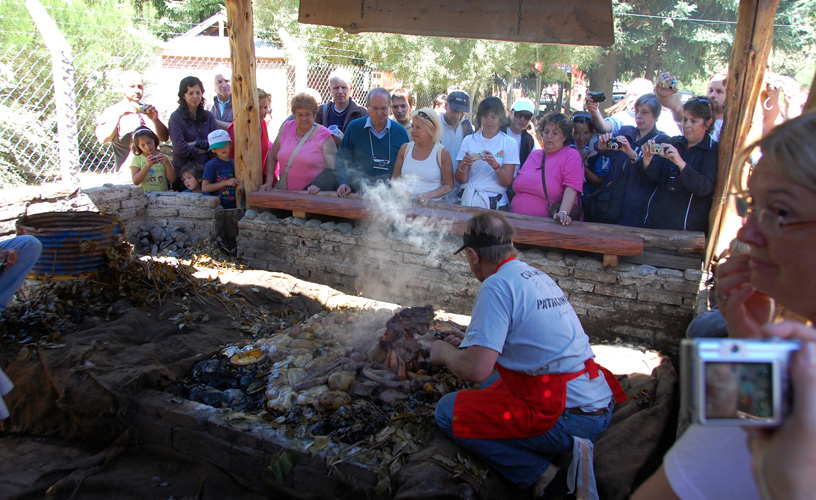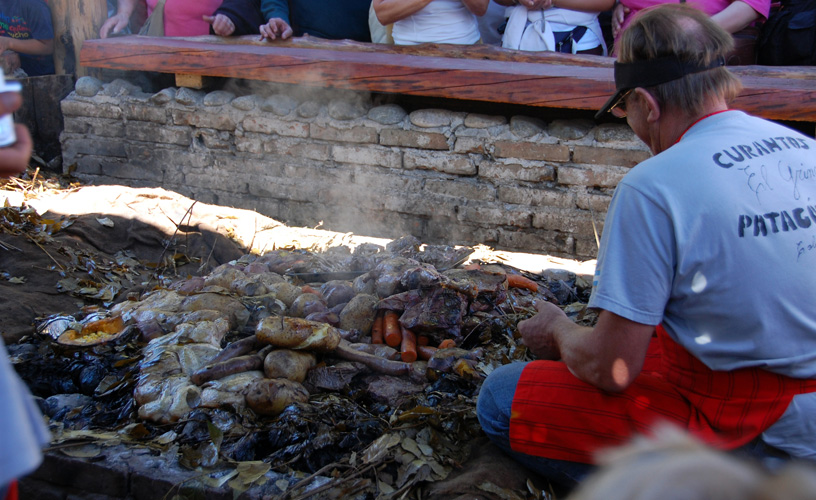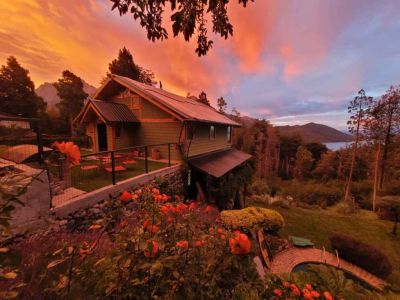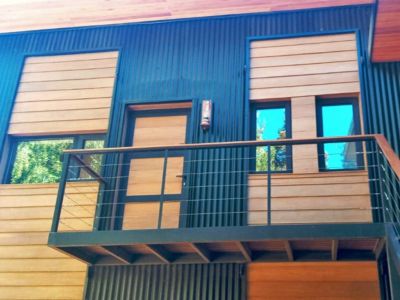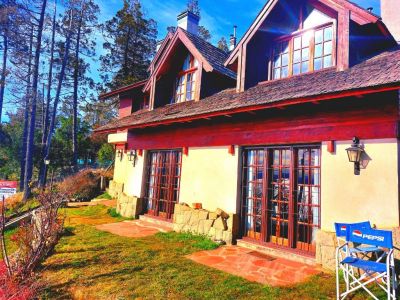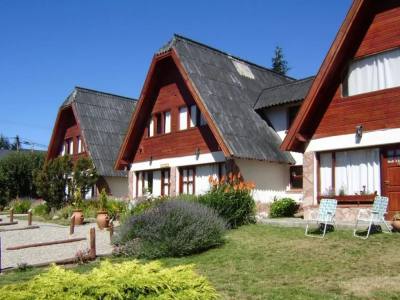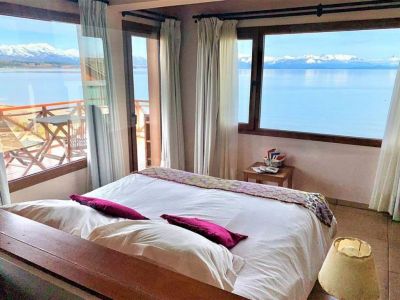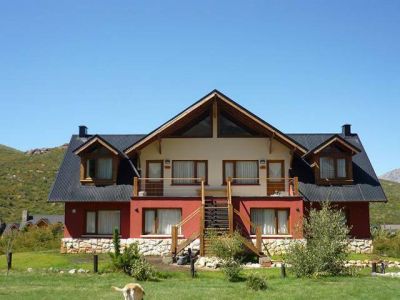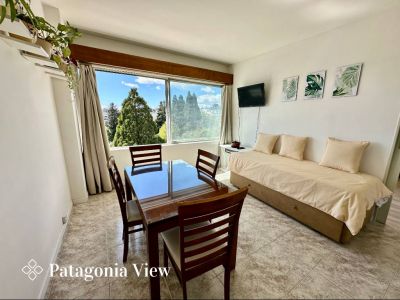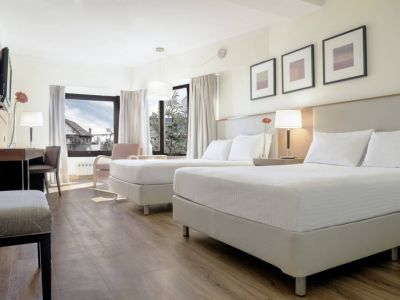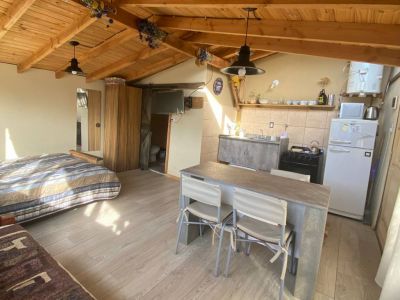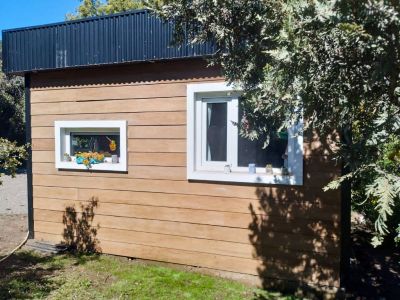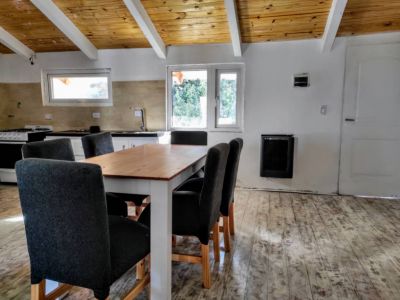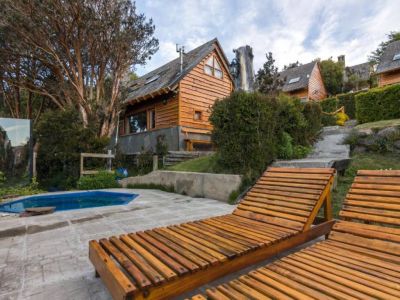Colonia at Sight
We entered a town sheltered by high hills and very old forests of cypresses and coihues. Its name: Colonia Suiza. It lies a few kilometers from the City of Bariloche. Little by little, we came across the first buildings, many of them made of wood and surrounded by domestic animals and sheds.
Finally, we accessed the center of town, where a handicrafts market co-exists with a small square where local products are sold. They are separated by a street that is known to everyone as the main in town.
The Goyes
The first person we talked to was Nielsen “Gringo” Goye, who told us about the history of this Andean town, its beginnings, its traditions and its famous curanto during an informal but very enjoyable chat.
Being a direct descendant of the first dwellers, he told us how his grandparents had settled down in the area to give shape to a big family and what kind of tasks they performed. He said that many immigrants still live in this spot.
The first Swiss immigrants became established in the area in 1895, thus creating the first wood settlement that supplied this colony and the first building sites in the City of Bariloche. In turn, they devoted themselves to cultivating the land to produce barley, oats, rye and fine fruit. Many of them had lived in Chile before that, where they had acquired the ability to make curanto, a traditional dish on the Chilean coast.
Curanto without Seafood
Bearing in mind the difficulty to bring seafood from the Pacific behind the mountain range, some ingredients of the curanto were adapted according to the Argentinian taste, including beef, chicken and lamb.
“Curanto” is a word in the araucano language and it means “hot rock”. Gringo Goye himself invited us to the “ceremony” and we accepted willingly to learn about this particular way of cooking. He led us to the Handicrafts Market, where this dish is prepared every Wednesday and Sunday for all those who come along to taste it. The ingredients were waiting on a big table and everything was prepared on one corner of the barbecue area in order to light the fire.
Curanto is made inside a large shallow hole in the ground where thin coihue branches are placed and covered with rocks. The fire is lit and when the wood is consumed, the hot rocks fall to the bottom of the hole.
At that moment, the rocks are covered with maqui branches and the beef, potatoes, sweet potatoes, squashes, inner parts, cheese and apples are placed for cooking. Afterwards, everything is covered again with maqui leaves. Cloths and dirt is put on top and only a kind of side chimney is left open to make combustion easier.
Slowly and without Haste
And the quietness is noticed again. It takes almost three hours to complete the cooking process. In the meantime, stories about Gringo and his children follow one another accompanied by the music played by Jiménez Agüero, who entertains all attendants with his lyrics.
Then, the task of uncovering the hole layer by layer begins. The ingredients have been cooked in an even way, with a peculiar taste similar to the traditional asado, magical and loaded with the value enclosed by this ritual passed on from generation to generation.
Long tables are arranged near the fire so that everyone may take their dish and be ready to enjoy the delicious curanto in the company of local craft brewed beer.
We went leisurely on a tour around the rest of the village watching that the present activities of the dwellers of Colonia Suiza are tightly connected with tourism: they offer a wide range of excellent gastronomy, pastry making in the tea-houses, craft brewed beers, smoked products and regional jams.
A small chapel, the Old Colonists Museum and some small beaches on Lake Perito Moreno are the main attractions in the surrounding areas. Likewise, its irrigation ditches still carry the meltdown water towards the lake. With the same calm with which we were welcomed, they bid their farewell as we started our way back to the city, without any haste.
Mónica Pons
Eduardo Epifanio
